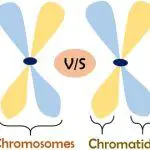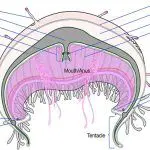The chromosome is the most condensed form of DNA, which remains packed into a thread-like structure. On the other hand, a chromatid is the one-half copy of the newly formed chromosome, joined by the centromere to the original chromosome. Secondly, the chromosomes are present every time in the nucleus of each cell and thus carry the genetic material. While chromatids form … [Read more...] about Difference Between Chromosomes and Chromatid
Difference Between Polyp and Medusae
The phylum Cnidaria has about 13,000 different species. The cnidarians come into two basic forms - polyp and medusae. The polyps are sessile tubular-bodied organisms which remain attached to the solid anchor like rocks. The main characteristic of them is the single, circular and terminal mouth that faces upwards to the water. They are primitive organisms that lack sense … [Read more...] about Difference Between Polyp and Medusae
Difference Between Surface Water and Groundwater
A major difference between surface water and groundwater is the location where they are found. On one side, you may find the surface water on the external parts of the earth’s crust, i.e. on the surface level. Rivers, streams, lakes, ponds etc., are the most common examples of sources of surface water. In contrast, the groundwater is present in the interior parts of the … [Read more...] about Difference Between Surface Water and Groundwater
Difference Between SNP and Mutation
SNP (Single nucleotide polymorphism) and mutation are both related to the structural changes in the genome. While researching, people often use these two terms interchangeably. However, scientifically, one must be very careful while using them. All the individuals except for the twins have their own version of genome sequences. These variations are mainly due to the SNPs. … [Read more...] about Difference Between SNP and Mutation
Difference Between Gas and Liquid Chromatography
Both gas and liquid chromatography serve the same purpose, i.e., separating the components of any mixture. But they vary greatly if we talk about their working mechanisms, components used and the required conditions. Gas chromatography uses gas as its mobile phase for moving the particles of the sample inside the column. In contrast, in liquid chromatography, the mobile … [Read more...] about Difference Between Gas and Liquid Chromatography





